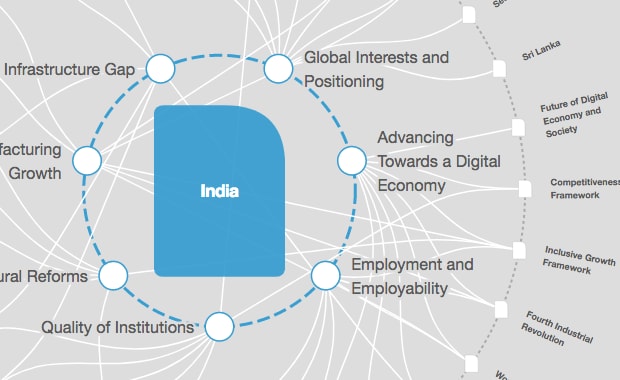India’s fertility rate has halved since 1980. This is a good sign for the economy

India’s average fertility rate between 2015 and 2020 was recorded at 2.3 per woman.
Image: REUTERS/Jayanta Dey
Stay up to date:
India
Decline in fertility rate could be crucial factor in bolstering India’s economic growth and have positive impact on ensuring right to health, education & jobs.
Indians are planning their families better and there are fewer unwanted pregnancies, a United Nations report has said, pointing out that the country has notched up numbers that are rare for developing countries.
According to the report, titled The State of World Population 2018, by the United Nations Population Fund (UNFPA), released Wednesday, India’s average fertility rate between 2015 and 2020 was recorded at 2.3 per woman.
Fertility rate defines the number of children that will be born to each woman if she lives through her reproductive years.
The figure of 2.3 marks a decline of over 50 per cent from the fertility rate of 4.97 India recorded between 1975 and 1980. The development is an important milestone for India, which, by several estimates, is slated to become the world’s most populous country in the first half of the next decade.
The decline, the report said, could be a crucial factor in bolstering India’s economic growth, with a positive impact also predicted on other sectors, such as ensuring the right to health, education, and jobs.
It also noted that India’s achievement defied prevailing trends.
“In most other parts of the world, such low fertility is achieved only at higher levels of income,” stated the report.
What’s behind India’s fertility rate decline?
The UNFPA credited India’s gains to its investment in human development, which it said reflected in the country’s improved health, better education statistics and decrease in child mortality.
The states of Kerala and Tamil Nadu find special mention in the report, which pointed out that the two had experienced major declines in the fertility rate despite limited economic growth.
“These states have comparatively less gender and economic inequality, and have also experienced rapid social development,” the report added.
India, alongside Bangladesh, Indonesia, Iran and Turkey, registered substantial declines in infant and child mortality, the report noted, saying it was partly because of healthcare systems establishing wider reach, economic development, reduced poverty, and increased female enrolment in primary and secondary education.
The report also noted that the shrinking Indian family could be attributed to greater support for reproductive rights, along with increased awareness about contraceptive measures.
“In India, between 2005 and 2015, unwanted fertility fell sharply… reflecting a trend of couples having the means to prevent pregnancy and having their preferred number of children,” the report stated.
Challenges ahead
According to the report, India’s fertility rate is close to the replacement level (the rate needed to maintain the population level from generation to generation, without migration; believed to be 2.1 for most countries). However, the report also pointed out that the average of 2.3 hid within it vast disparities among Indian states.
In the states of Uttar Pradesh, Bihar and Madhya Pradesh, the fertility rate was recorded at over 3.0, while it was below the replacement level in Maharashtra, West Bengal, Kerala, Karnataka, Tamil Nadu and Andhra Pradesh, which is a positive development in light of India’s burgeoning population.
The UNFPA also pointed out that child marriages remained a common problem in India too, to the detriment of child rights as well as family planning. According to the report, in 2011, 21.5 per cent of Indian girls aged between 15 and 19 were married.
The way forward
The authors of the report said no country could claim that all citizens enjoyed reproductive rights at all times, but added that a push in this direction could bolster economic and social development.
“When people lack choice, it can have a long-term impact on fertility rates, often making them higher or lower than what most people desire,” they wrote.
They suggested that, in order to assure reproductive rights to all women, countries should prioritise universal access to quality healthcare, including modern contraceptives, and ensure better education, including age-appropriate sex education.
Don't miss any update on this topic
Create a free account and access your personalized content collection with our latest publications and analyses.
License and Republishing
World Economic Forum articles may be republished in accordance with the Creative Commons Attribution-NonCommercial-NoDerivatives 4.0 International Public License, and in accordance with our Terms of Use.
The views expressed in this article are those of the author alone and not the World Economic Forum.
Related topics:
Forum Stories newsletter
Bringing you weekly curated insights and analysis on the global issues that matter.
More on Geographies in DepthSee all
Yusuf Maitama Tuggar
July 10, 2025
Kaiser Kuo
June 24, 2025
Kaiser Kuo
June 19, 2025
Aimée Dushime
April 18, 2025
Samir Saran and Anirban Sarma
April 17, 2025
Nada AlSaeed
April 16, 2025







